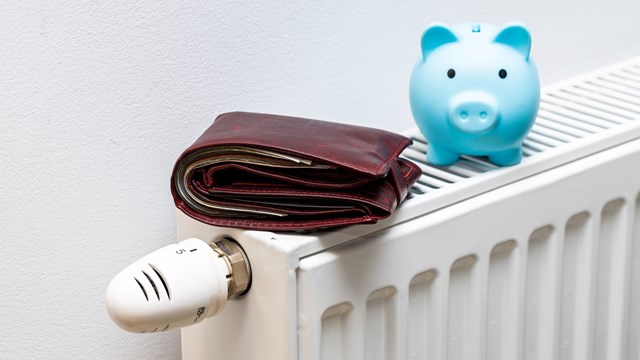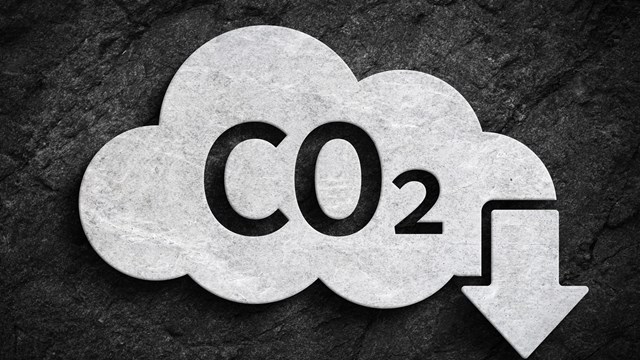
Last winter's frigid temperatures shocked many city dwellers accustomed to the mild temperatures that have been the new norm in New York for several years. New Yorkers donned down coats, insulated boots, and thermal underwear, and millions watched solemnly as their heating bills soared.
Because last winter was one of the coldest in many years, fuel consumption in the city was incredibly high. That was one reason for the rise in fuel costs; the demand was high but the supply was low. Another determining factor were the conditions in the world market for fuel, according to Martin Rosenman, president of Stuyvesant Fuel, a natural gas and oil service provider in the Bronx. "Problems in Iraq, problems in Nigeria, and unrest in Venezuela, which led to a lack of production last year, all contributed to the rise in oil prices," he says. The lack of gas available - thanks to underproduction - also contributed to the corresponding rise in oil prices.
In many of the city's residential buildings, oil is the fuel most often used for heat. A large percentage of older buildings have operated on oil heat from the time of their construction and have never converted. Lower prices have a lot to do with why oil is so widely used. According to Joseph Losquadro, president of Consumers Energy Group, an oil supplier and service provider based in Brooklyn, natural gas is usually more expensive than oil. "Oil is about 30 percent cheaper than natural gas," he says. Losquadro adds that when you tack on taxes, delivery charges and other miscellaneous fees to the natural gas price, oil may prove to be the better value.
Just as there are different grades of gasoline to put into your car so there are different grades of oil. There's number six oil, number four oil, and number two oil. Number two oil is most commonly used in residential homes. It is distilled oil and is more expensive than the other two types. Number four and number six oil are the most commonly used in multifamily buildings. In the past, number six oil - which is recycled oil - was cheaper than number four oil, but according to Losquadro, there has been little difference between prices in recent years. "Number six oil has more viscosity," he says. "It's very heavy and gives more BTU's per gallon, [but has to] be pre-heated, and its heating system requires more maintenance."
Many fuel suppliers offer three options for fuel pricing; capped rates, floating rates, and fixed rates. Capped pricing plans allow for fluctuations in the price of fuel, but the maximum rate paid for fuel will be locked in. The customers price will not exceed the agreed upon cap. Floating rates are just as they sound - the price paid depends on market conditions."Ninety-five percent of our customers buy their fuel at market prices, " says Louis Romano, senior vice-president of Castle Oil Corp., a fuel supplier and service company located in Harrison, New York. He recommends paying the market rate because in the past six years those who didn't lock in their prices actually got better rates.
Fixed rates secure one rate for fuel for the entire season or year, depending on the contract. Deciding to go with fixed rates on fuel might be the best choice for owners who need to outline their expenses up front. "Fixed pricing allows consumers to budget their expenses - their bottom line won't be eroded by the price of energy," says Rosenman.
The actual price you pay for your oil is definitely dependent on the crude oil market, but there are other determining factors. "Volume determines price, as well as whether you get your oil and boiler service from the same company, " says Losquadro, who advises consumers to do their homework and ally themselves with a reputable fuel company.
"Shop around for the best prices and the best company," Romano urges. "Search for an ethical company who has a good product and good service."
A new technology that can aid in lowering fuel bills is electronic monitoring of the heating and water systems.
"Fuel computers give building owners and managers a view of the internal operations of the heating and water systems," says Elie Jabbour, vice president of U.S. Energy Controls, a manufacturer and installer of electronic heating control systems located in Flushing, New York. Small sensors attached in strategic areas of the system can find leaks, temperature discrepancies, and spot small problems before they become major catastrophes.
Traditional timing controls often encourage the boiler to cycle, providing heat even after building interiors are comfortably warm. This results in overheating and wastes precious fuel. "Over-heating apartments wastes vast quantities of fuel [and] electricity and reduces boiler longevity," says Jabbour. He continues, "By installing temperature sensors, overheating can be eradicated."
Jabbour says that by installing indoor temperature sensors in every top-floor apartment, the fuel computer can determine whether a heat imbalance exists. In those apartments where the discrepancies exist, several economically responsible measures can be taken to create a comfortable temperature. Replacing small radiator air valves with larger ones, installing radiators where none previously existed, or insulating walls in the cooler apartments are several measures that can be taken instead of increasing the heat in the entire building for the sake of one apartment. Having sensors monitor the boiler temperature will also let management know if the boiler is not heating efficiently due to soot buildup. This buildup creates insulation, which wastes heat.
If a building determines that their boiler is operating inefficiently, it's time to consider what type to replace it with. "If your equipment hasn't been updated since the 1980's, it's probably not as efficient as it could be, " says Losquadro.
The cost for replacing a boiler and tank in an eight- to 10-family building would cost approximately $5,000, according to Losquadro. This type of work can be done year-round, but the prices are slightly better in the summer.
Another option would be installing dual fuel, also known as an interrupted boiler system. "With dual fuel, the boiler can accommodate gas or number two oil," explains Jabbour. "Depending on [fuel] prices, owners can go with one or the other - depending on market prices, they can go with the incentives."
Dual fuel heating systems provide the consumer the option of using oil or natural gas as their fuel of choice. With only the flip of a switch on the boiler, they can determine which fuel they choose to use on any given day. As convenient as it sounds, the conversion to a two-fuel system can be a very daunting task. Romano says that in an older building, the basement would need to be gutted and a new burner and boiler would need to be installed. Depending on the age of the building, asbestos might also be an issue that would have to be dealt with - sending the cost of installing the dual fuel system into the tens of thousands of dollars.
So where would a responsible board of modest or limited means find the capital to take on some of these improvements? New York State has a lending program called New York Energy Smart Loan Fund run through the Residential Technical Assistance Program (ResTech). The program provides low interest rate loans for qualified energy efficient projects by homeowners. "It's a good way to invest in one's building," states Michael Cosgrove, project manager for the New York State Energy Research and Development Authority (NYSERDA). Cosgrove says this loan could be used for improvements such as installing energy smart lighting and high efficiency boiler systems. The loan fund buys down current interest rates by four percent from their partner lenders, or four percent below the prevailing rate. With the current low interest rates, this works out to a virtually interest-free loan.
Also through ResTech, residents can receive technical assistance from qualified firms who can help owners identify areas for energy efficiency and cost-saving improvements. Guidelines for these programs are available through www.getenergysmart.org.
Romano suggests that buildings maintain their boiler's efficiency by having it cleaned regularly. Soot builds up in the tubes and decreases the effectiveness of the boiler. He recommends cleaning four to six times a years for number six oil burners, cleaning three to four times a year for number four oil burners, and once yearly for number two oil burners. "You should also do an overhaul of the burner once a year prior to the heating season," Romano advises.
"Make sure the system is balanced, and that all of the steam vents are working properly," adds Losquadro. In addition, Losquadro encourages managers to remember Local Law 62 of 1991, which mandates regular low-pressure boiler inspections by a licensed plumber or oil burner installer.
Nobody knows what this winter has in store for the city in terms of cold temperatures, duration, or fluctuations in the city's oil and gas supply. For now, the pros say managers and boards would be wise to research all the pricing options, work closely with their fuel provider and state programs, and keep their physical plants running clean.






Leave a Comment